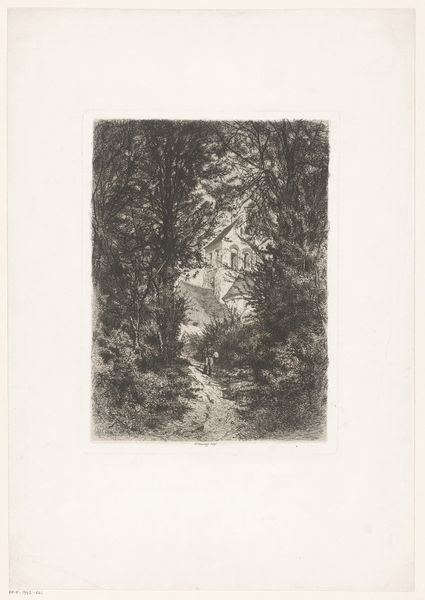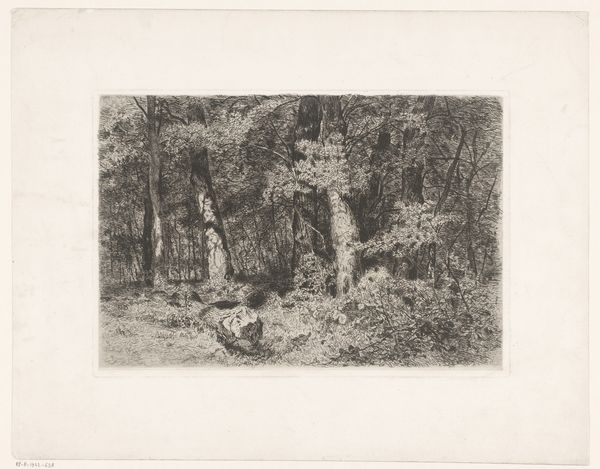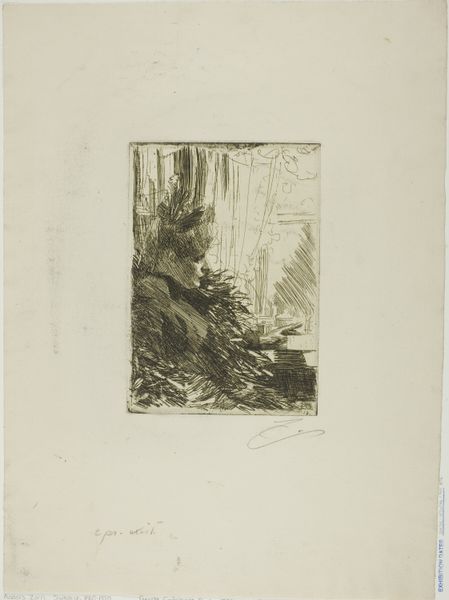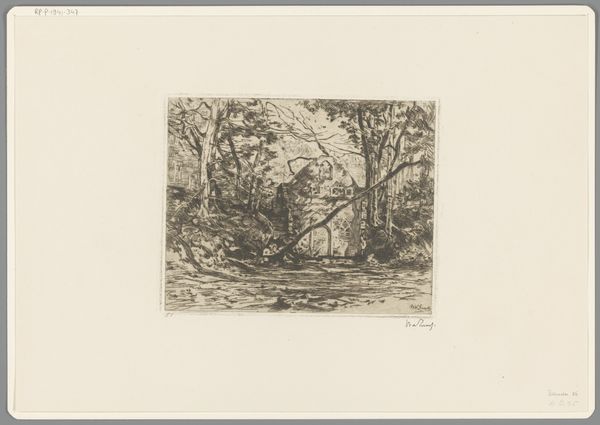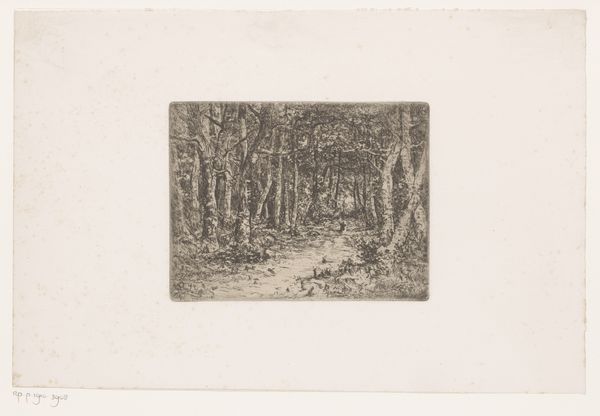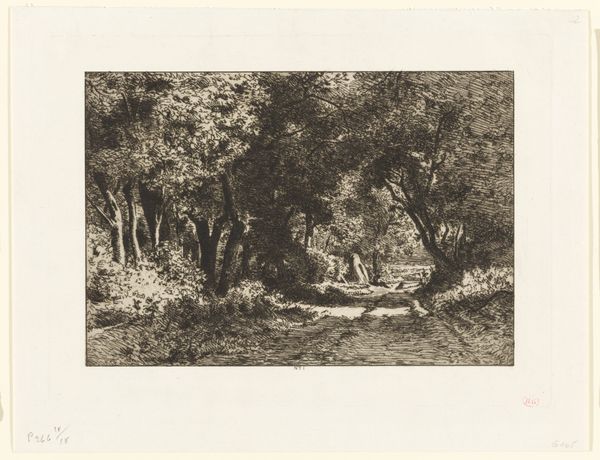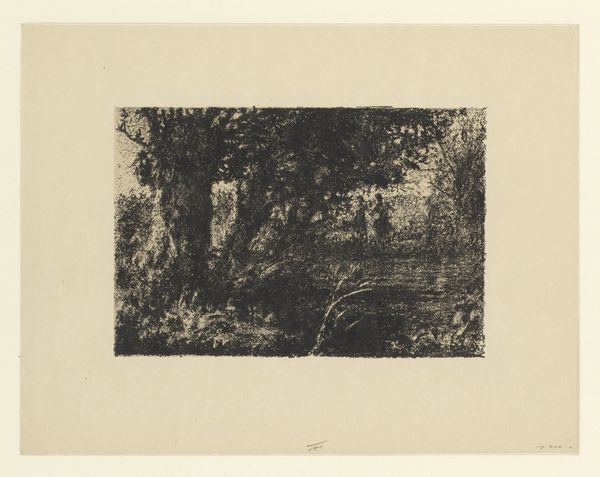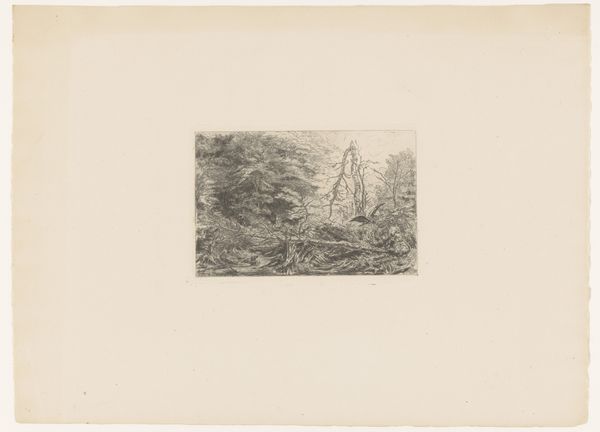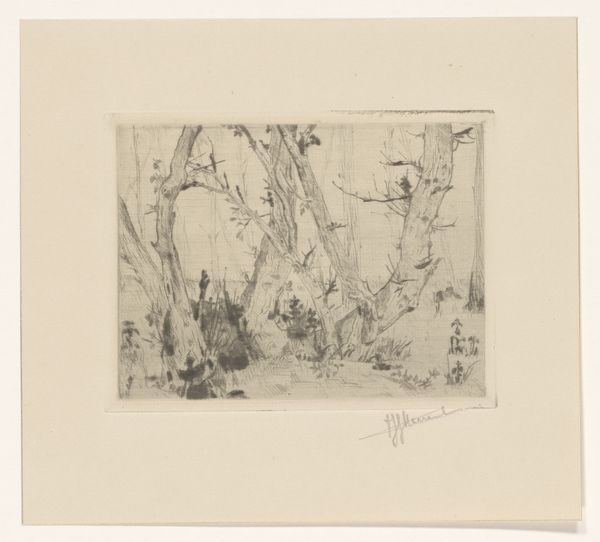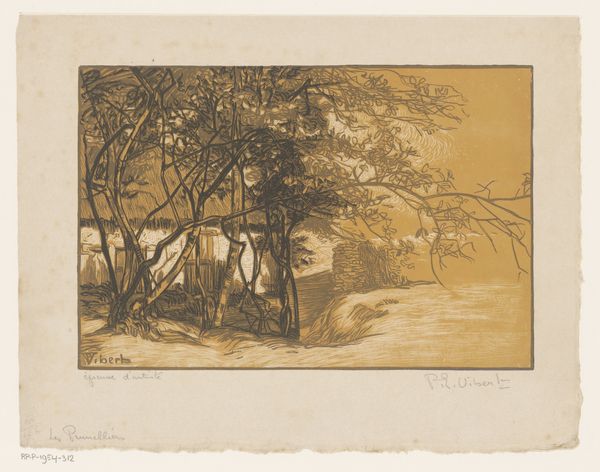
Dimensions: height 168 mm, width 193 mm
Copyright: Rijks Museum: Open Domain
Editor: So this is Max Liebermann’s “Tuin met dames en heren,” or "Garden with Ladies and Gentlemen," created sometime between 1857 and 1935. It’s an etching printed in ink, with aspects of drawing. The scene feels very lively, capturing a moment of leisure in a garden. What do you see in this piece? Curator: The most potent aspect is this persistent symbol of cultivated leisure. Throughout art history, from Watteau's fêtes galantes to Impressionist garden parties, the garden setting acts as a stage for social rituals and reveals coded displays of class, taste, and cultural memory. Editor: Coded displays? Could you elaborate on that? Curator: Think of the placement of the figures. They’re not simply relaxing; their arrangements, attire, and gestures speak to a particular societal class structure. How might the formal attire of these figures in a seemingly casual garden relate to displays of status and belonging? Editor: I guess it shows a cultivated refinement, maybe a sense of belonging to a certain social sphere… like an exclusive club of sorts. It’s not just being outside, but performing leisure. Curator: Precisely. The print itself, being a reproducible medium, speaks to a broader dissemination of this ideal – accessible yet still aspirational for many. The ink echoes somber tones, but I also notice the soft light as if beckoning towards the promise of a modern Eden, don’t you agree? Editor: That’s a great way to put it! It really makes you consider what a simple garden scene represents culturally. Curator: It's about deciphering what such spaces meant then, and perhaps even what they continue to signify today in our own longing for tranquil and ordered spaces. I appreciate Liebermann capturing how encoded social messages hide within simple settings.
Comments
No comments
Be the first to comment and join the conversation on the ultimate creative platform.
